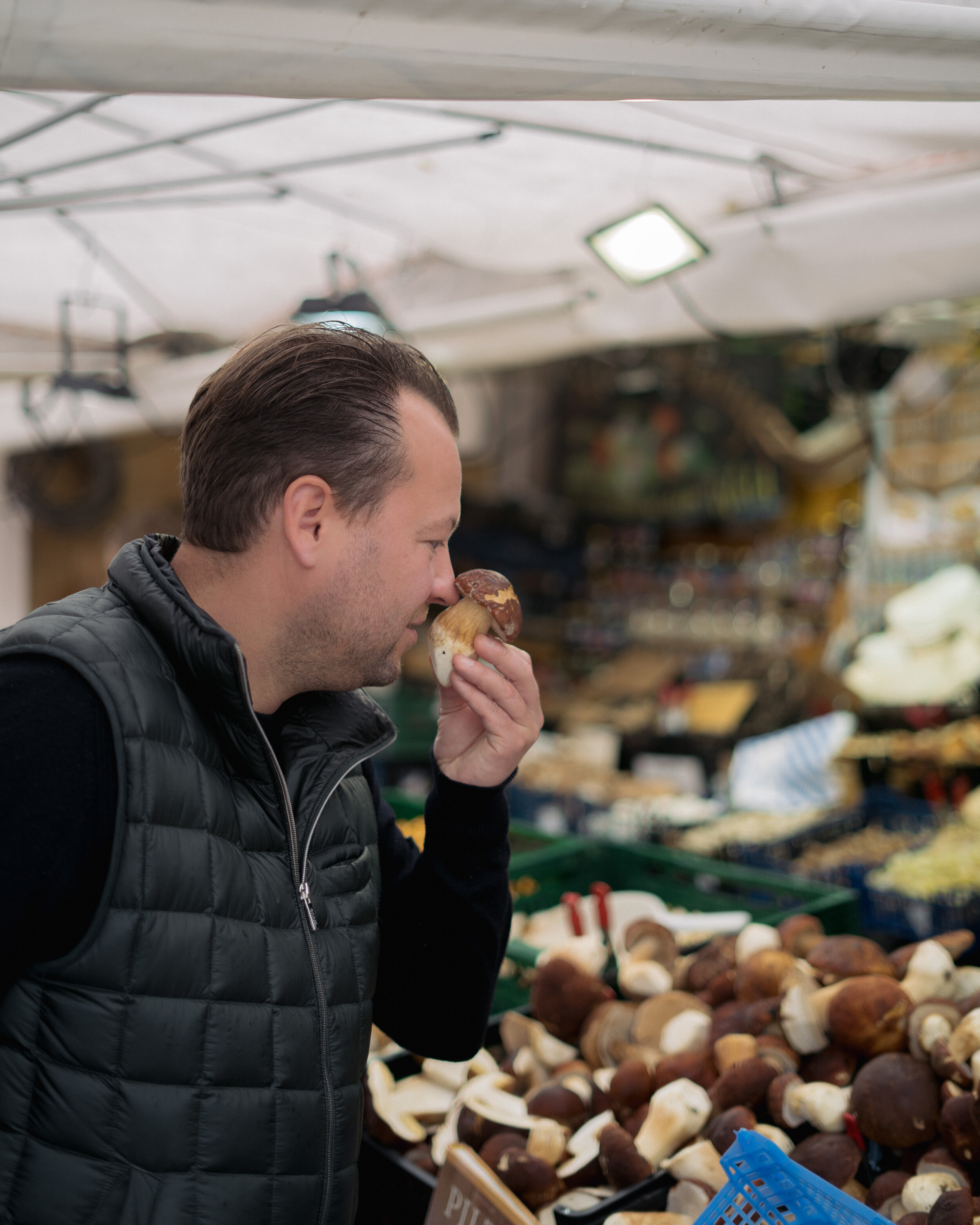Where Munich Moves Jan Hartwig
Taking a stroll across the Bavarian capital with a chef
Jan Hartwig (all photos © Malte Dibbern for DFT)
«I can’t stand the image some chefs are cultivating. Our job isn’t the hardest on the planet. Yes, it’s tough. Yes, you have to make some painful compromises. But we’re no emergency physicians. People’s lives don’t depend on what we’re doing.»
Jan Hartwig was, until very recently, head chef at Atelier, Munich’s most decorated restaurant. Under his watch, the restaurant was consistently awarded three Michelin stars and 19 Gault Millau points. He is 38 years old. He is eloquent and refreshingly unpretentious, despite the media attention chefs of his calibre receive these days. He also sports none of the martial tattoos that otherwise seem to have become prerequisite among his generation of chefs. His overall demeanour is surprisingly calm for someone who’s achieved as much as he has, at such a young age.
«During my first work experience at a restaurant back home, when I was 15 years old, I was tasked with rolling 2200 small meatballs for a large serving of Niedersächsische Hochzeitssuppe. I hated it. Of course I did. But someone needs to do these jobs, and once they’re done, it doesn’t seem so bad anymore. It’s part of the job.» For the past decade-and-a-half, Jan didn’t have to roll meatballs any longer. After having worked as sous-chef for some of Germany’s most famed cuisiniers, he was eventually hired as head chef of Restaurant Atelier at Hotel Bayrischer Hof in Munich. Under his stewardship, Atelier’s Michelin star count increased from one to three. This success, he is quick to point out, wasn’t the result of barbarous working conditions: «You could hear a pin drop during service. What I need is for everybody to be focussed, which is why there’s no music or anything like that. And definitely no shouting.» Intimidation quite simply isn’t part of Jan Hartwig’s three star recipe.
Very recently, Jan decided to resign from his post and is currently devising a concept for an upcoming restaurant, which he intends to run independently. One thing is for certain, however: It will be located in Munich. «I know the clientele, I know the best suppliers. Moreover, I like life here in Munich.» Living in the heart of downtown Munich, he gets most of his fruits and vegetables at Viktualienmarkt. «There are some chefs that like to do photo stories of them going to Viktualienmarkt to buy products for their restaurant, which they then carry there on their bike. That’s completely preposterous, of course. When I’m working, I simply wouldn’t have the time for that. But for my cooking at home, I get most ingredients at Viktualienmarkt and nearby Eataly.» For that reason, Jan knows precisely where to go for which groceries, as proven by some outstanding porcini he samples at his trusted mushroom vendor’s stand. When asked whether those almost irritatingly flawless mushrooms are from Germany - which is quite rare in itself -, the vendor is very quick to point out that that «they’re from Bavaria!».
As he strolls across Viktualienmarkt, Jan is regularly approached by friends and acquaintances, many of which are also working in the hospitality sector. «There’s this idea that there’s relentless, fiery competition among chefs. That’s simply not true, certainly not here in Munich. If a delivery was missing part of our order, I’d give [the two-star restaurant at] Dallmayr’s a call and ask them to help us out, or vice versa. We’re colleagues, rather than opponents.»
Munich also played part in Jan’s personal success story, as it’s among the few places in Germany where guests are willing to pay prices in proper relation to the culinary quality they’re presented with. «I grew up near Hanover, a region that still is culinary diaspora. Munich is very different.» Also in the sense that there is a cherished traditional local cuisine, which Jan himself is able to appreciate, despite the grave differences from his own cooking style. But also in the case of Haxn and Kasnocken, culinary quality is hardly ubiquitous. For a proper, hearty Bavarian meal, Jan recommends Augustiner Keller, where the rustic ambience isn’t considered an excuse to serve mediocre food.
With regards to the ongoing debate regarding Munich’s best espresso, Jan is among those who consider Schumann’s Tagesbar the premier address. During his Atelier days, he would go there every morning for a cup of Italian stimulant. Similarly, he would go for an early run at Englischer Garten, where he particularly enjoys the panoramic view of Munich from Menopteros and the calm of Kleinhesseloher See. However, his athletic efforts have been severely hampered by Jan’s having contracted Covid-19 earlier this year. For a brief period, he even lost his gustatory sense.
This year has accordingly been a rather dramatic few months for this exceptional chef. Thankfully, he was able to rely upon was his adopted hometown - friends, colleagues, Viktualienmarkt and all.


















Car interior designer who created some of the most significant cabins of all time, most notably the Porsche 928’s